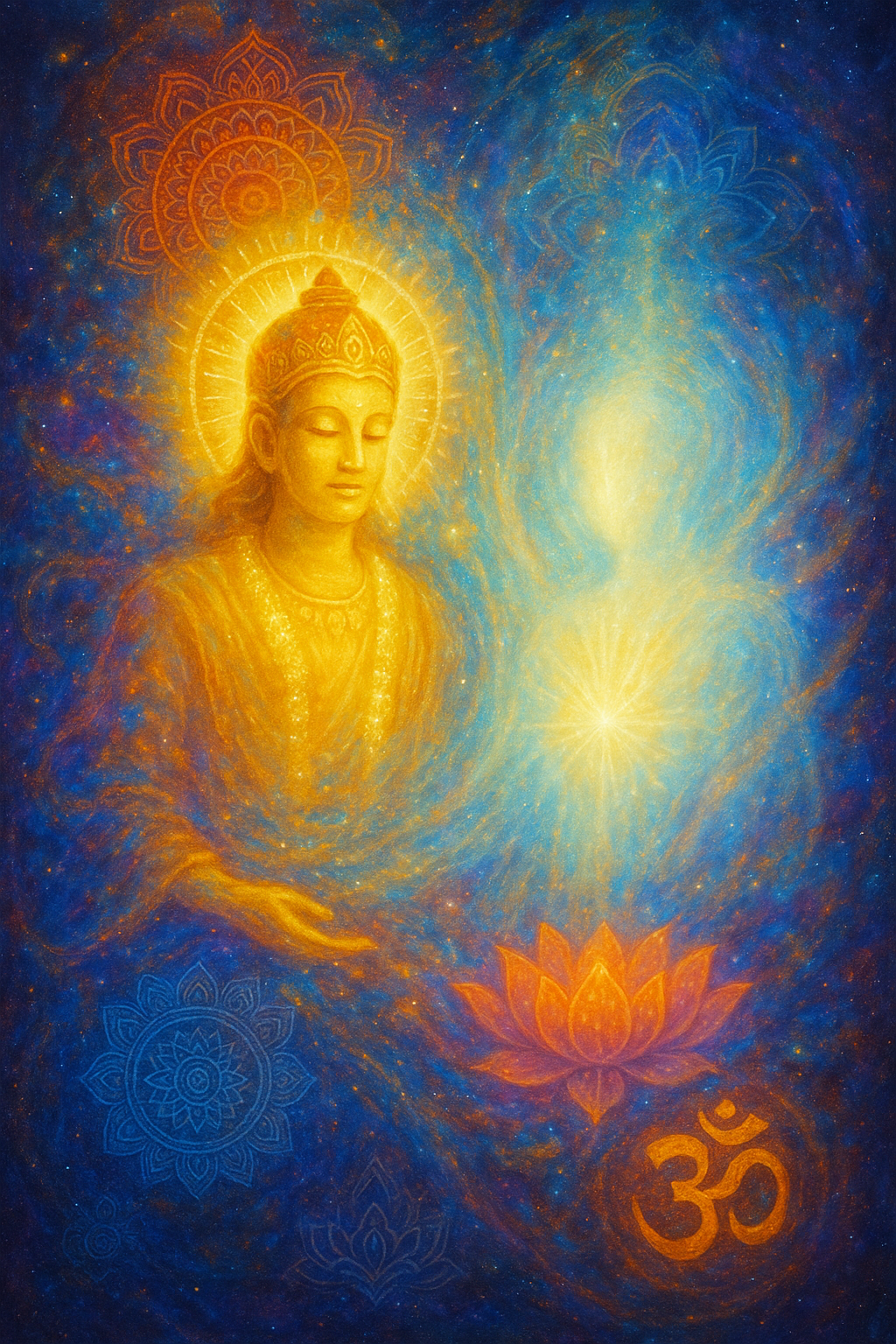Saakar and Niraakar

Sākār (साकार) and Nirākār (निराकार) are two fundamental concepts in Hindu philosophy and spirituality describing the nature of the divine:
Sākār means "with form". It refers to God or the ultimate reality being worshipped or conceived in a specific, perceivable form. This could be as deities (like Krishna, Rama, Shiva), idols, images, or any physical manifestation. The Sākār aspect allows devotees to relate to and focus their devotion on a tangible representation, which can make meditation and worship easier, especially for beginners[1][3][4][5]. In Hinduism, the divine forms (avatars) like Krishna, Rama, etc., are considered Sākār manifestations, but their form is believed to be divine and not made of ordinary matter[3][5].
Nirākār means "formless". It refers to God or the ultimate reality as being without any specific shape, image, or physical attributes. The Nirākār aspect is abstract, beyond human senses, and cannot be visualized or confined to any material form. This is often identified with the concept of Brahman—the infinite, unmanifest, all-pervading consciousness or spirit[1][3][5]. Worship in the Nirākār mode is more meditative and philosophical, focusing on the formless, attributeless Absolute.
Key Points
- Both Sākār and Nirākār are accepted in Hinduism. Scriptures and teachers often state that God is both with form and formless, and devotees may choose the approach that suits their temperament or stage of spiritual development[1][2][3][6].
- Sākār worship is often recommended as a starting point because it helps focus the mind, similar to how children learn with pictures before grasping abstract concepts[1].
- Nirākār worship is considered more advanced, requiring greater abstraction and detachment, but both paths are valid and lead to the same ultimate realization[1][3][6].
- No contradiction: Many traditions emphasize that these are not contradictory but complementary ways to approach the divine, which is ultimately beyond all human concepts and limitations[1][2][3][6].
| Aspect | Sākār (With Form) | Nirākār (Formless) |
|---|---|---|
| Meaning | God with a specific, perceivable form | God without any form or attributes |
| Worship | Through idols, images, avatars | Through meditation, abstract contemplation |
| Accessibility | Easier for beginners, tangible focus | More advanced, abstract |
| Example | Krishna, Rama, Shiva, Durga, etc. | Brahman, the Absolute, pure consciousness |
| Scriptural support | Both aspects described as real and valid in scriptures like the Bhagavad Gita and Upanishads[2][3][6] | Both aspects described as real and valid in scriptures like the Bhagavad Gita and Upanishads[2][3][6] |
In summary:
Sākār is the divine with form; Nirākār is the divine without form. Both are accepted as authentic ways to realize and worship God in Hindu philosophy, and the choice depends on personal inclination and spiritual maturity[1][2][3][6].
[1] https://www.nirankari.org/sydney/youth/articles/is-god-sakar-or-nirakar.html
[2] https://www.youtube.com/watch?v=bvabQjUS-s8
[3] https://ramcharitmanas.info/sagun-and-nirgun-aspects-of-god/
[4] http://harisharanam.blogspot.com/2010/08/confusion-between-sakar-form-and.html
[5] https://www.justforkidsonly.com/truth/?tag=nirakar
[6] https://hindudharmaforums.com/showthread.php?4919-Chapter-12-1-for-people-who-are-still-confused-about-nirakar-or-sakar-upasana
[7] https://iskcondesiretree.com/forum/topics/which-form-of-god-first-exiting-sakar-or-nirakar
Comments
Post a Comment